By Maya Weeks
Microplastics Adventure Scientist
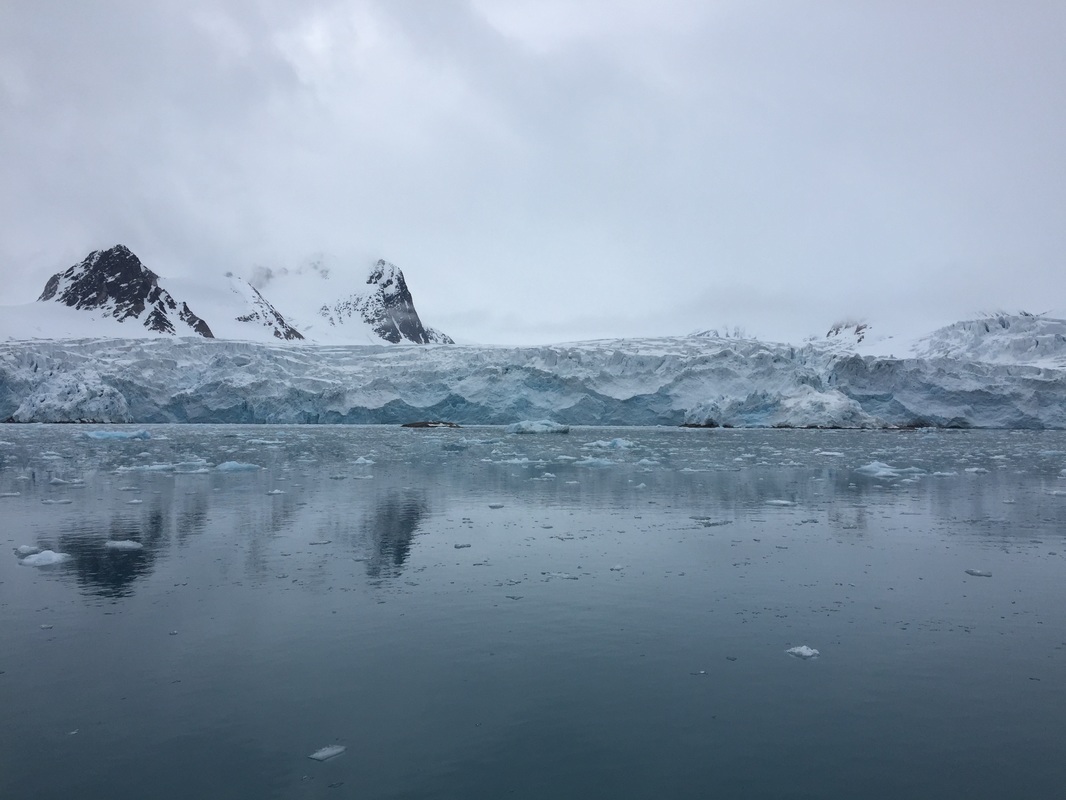
Massive calving glacier seen from the ship. Photo: Maya Weeks
Sørvika, Murchisonfjorden, Nordaustlandet
Now we are sailing and, having helped hoist a jib and the mainsheet, I’m so happy. Every day on this trip I think THIS IS THE HAPPIEST I’VE EVER BEEN. Especially when I’m climbing out of the water having just jumped in the 2-degree (Celsius) Arctic Ocean. It doesn’t so much feel cold as shocking. It’s not that you go numb but rather you forget your name, your age, everything except being alive, and then you run stumbling out of the water over the rocks onto the beach or, on a lucky day, up the ladder onto the deck of the ship.
Today we cleaned up the beach at Sørvika in Murchisonfjorden in Nordaustlandet. A tide line covered in trash, much of the beach covered with too many microplastics to totally collect, and me so happy and sad and angry at the same time. The feeling of wanting to punch and cry at the same time while also knowing the extreme luxury of being in this place–this place where humans don’t live, this place that is a nature reserve, this place at the end of the Gulf Stream where so much trash from around the world accumulates.
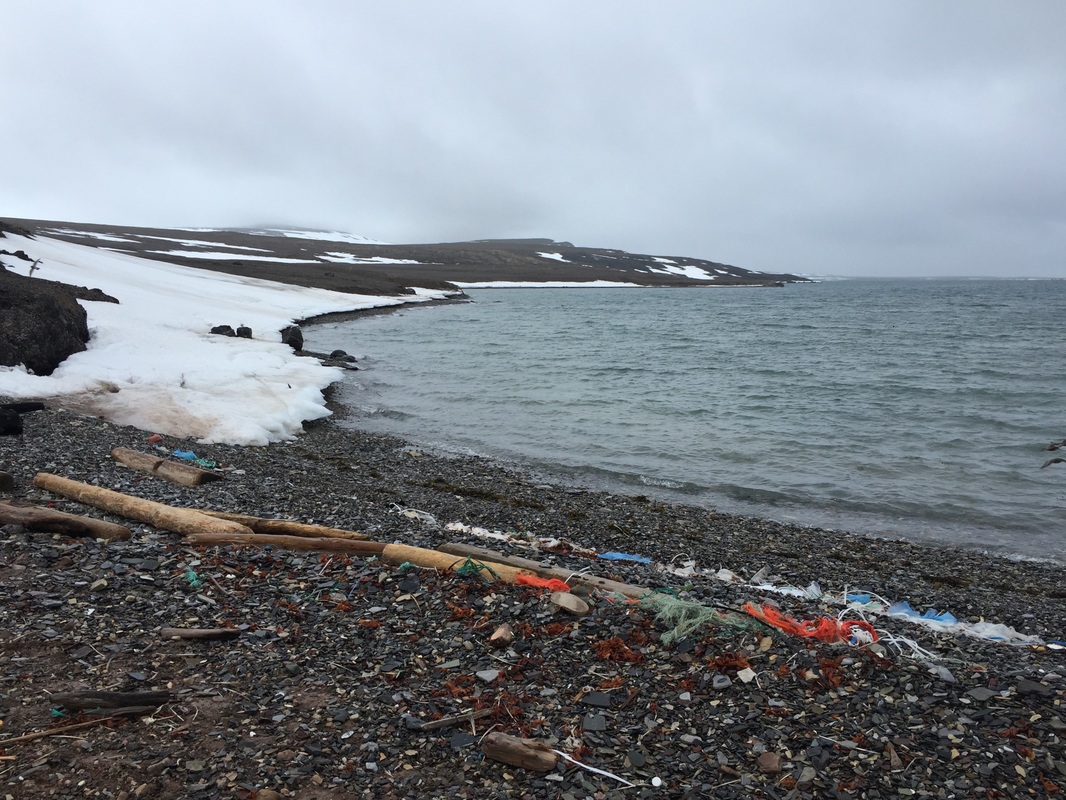
The high tide line at Sørvika, where kilos of microplastics and marine debris had accumulated. Photo: Maya Weeks
During this one foggy morning we collected 41 kilos of marine debris in an hour. Then Ryo, Birgit, and I sorted all the trash and weighed it on deck: ropes from fishing and shipping, plastic packaging, shotgun shell cartridges, a toothbrush head, bottle caps, a toy dog’s foot, two pieces of artificial grass, shoes, paper goods, hygienic items, even plastic nurdles (plastic in its pre-production form).
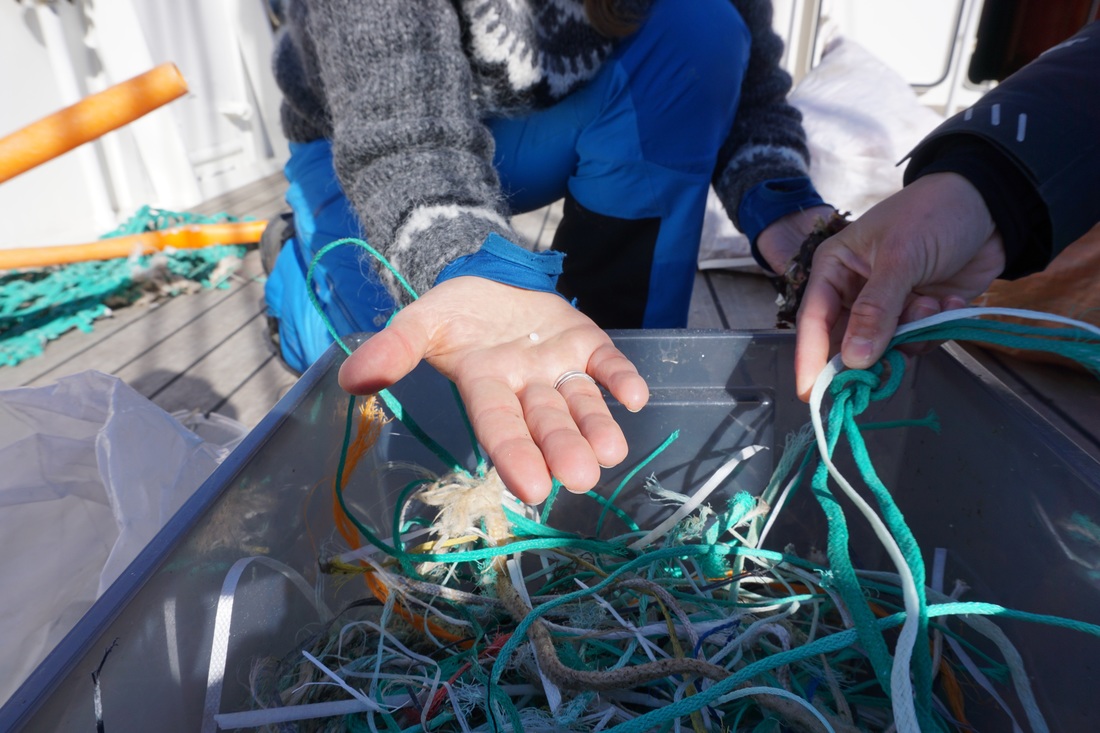
Birgit Lutz palms a nurdle while sorting marine debris and microplastics with Ryo Yamauchi. Photo: Maya Weeks
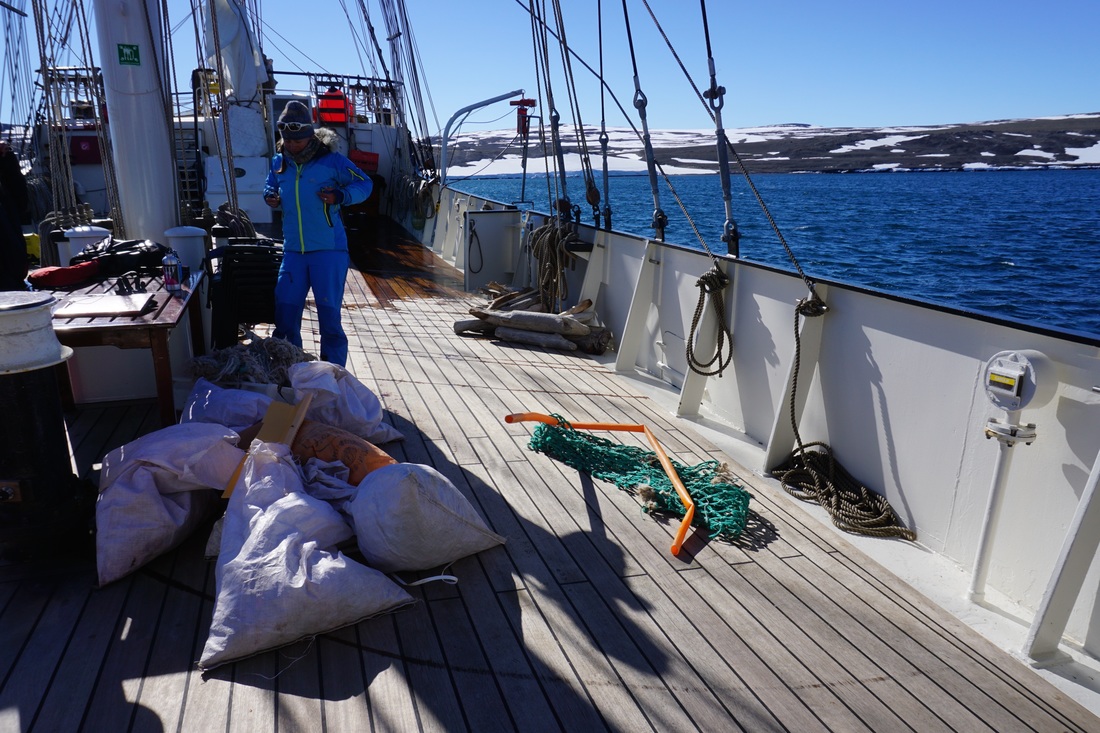
Bagged trash we sorted and weighed on deck. Photo: Maya Weeks
A small white flat from the shipping industry. Hard plastics of various shapes and colours. Ryo found a plastic raven’s head.
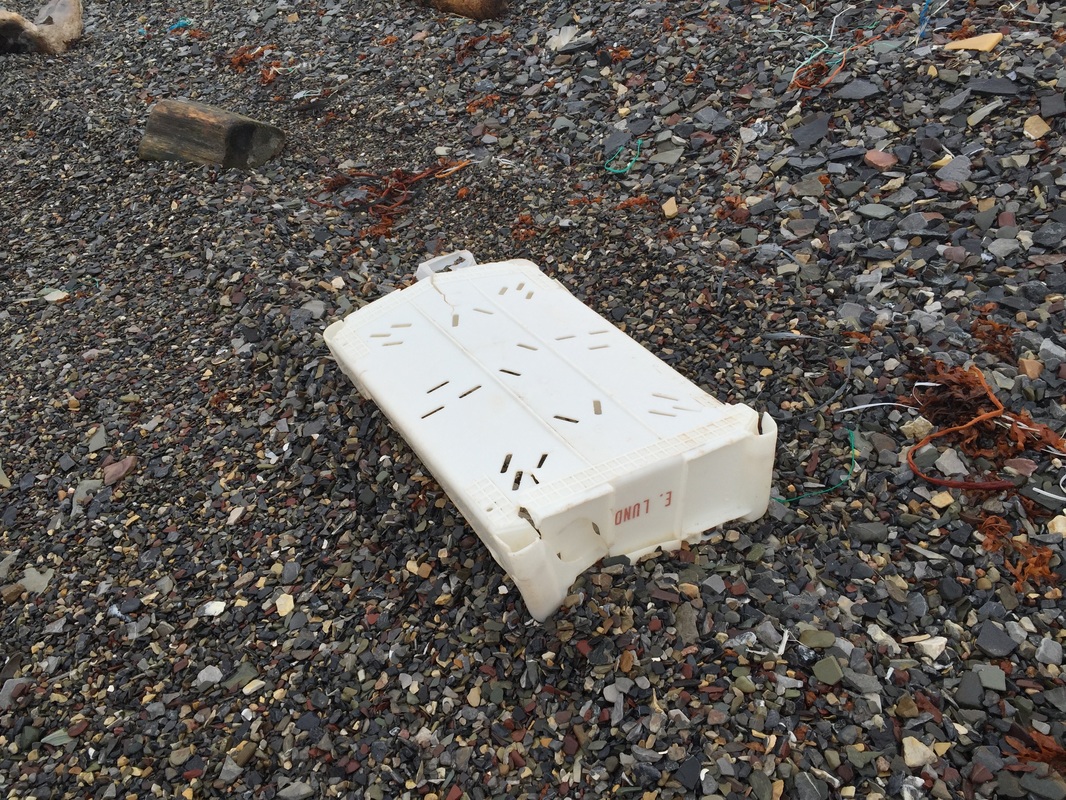
Shipping flat we found among the various marine debris. Photo: Maya Weeks
Since a lot of the debris was microplastics, sorting the six bags of trash meant that we were picking through piles of feathers and seaweed to remove the plastics, and then throwing the feathers and seaweed back into the sea.
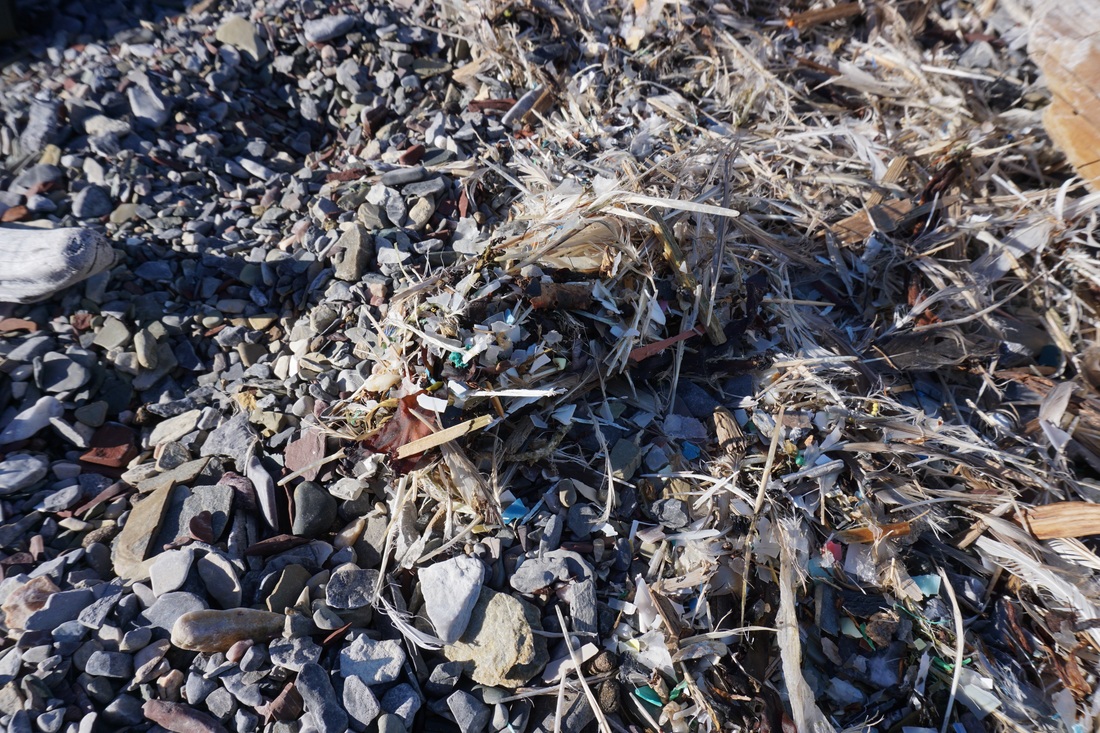
Close-up of microplastics on the beach in Sørvika. Photo: Maya Weeks
Knowing that so much marine debris accumulates in Svalbard, in one of the places on the planet most rapidly experiencing climate change, is what drew me to undertake research in this archipelago situated halfway between Norway and the North Pole. But no amount of studies I’d read could prepare me for landing on a beach with no other humans in sight and cleaning up kilo after kilo of waste, so much of it miniscule.
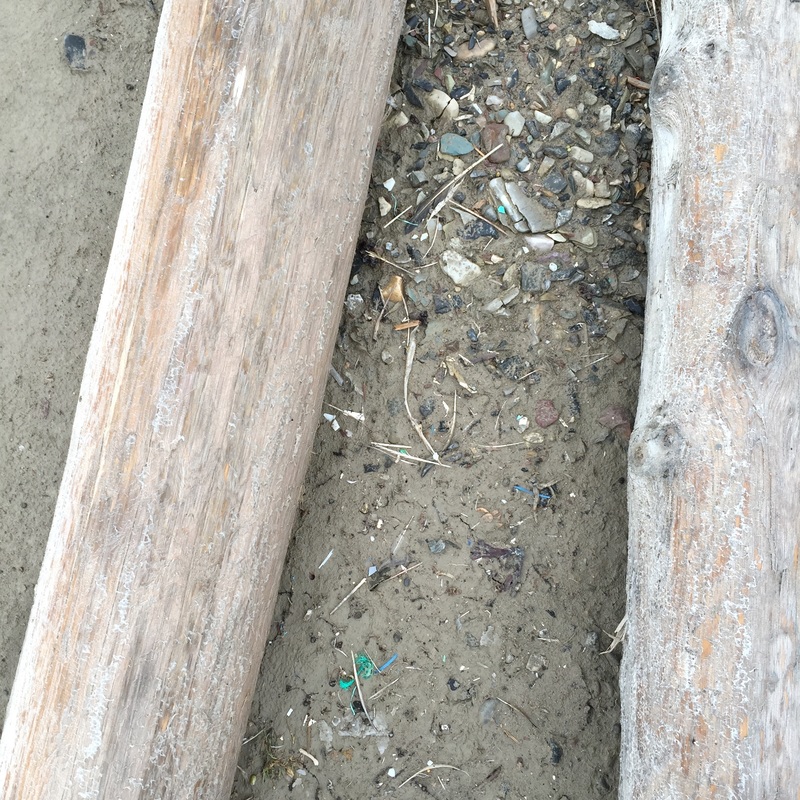
Microplastics littered the beach during every landing. Photo: Maya Weeks
Even on beaches with less trash than this one, marine debris is a common sight. On every landing, I carted at least one bag full back to our ship, which is participating in a Svalbard-wide survey of marine debris for the duration of the summer.

Big bottle found while on a beach walk. Photo: Maya Weeks
I stumbled upon this big bottle at Tinarebreen. And when we finally saw a (starving) polar bear, he was walking on beaches covered in trash, like this one with three plastic buoys in a row.
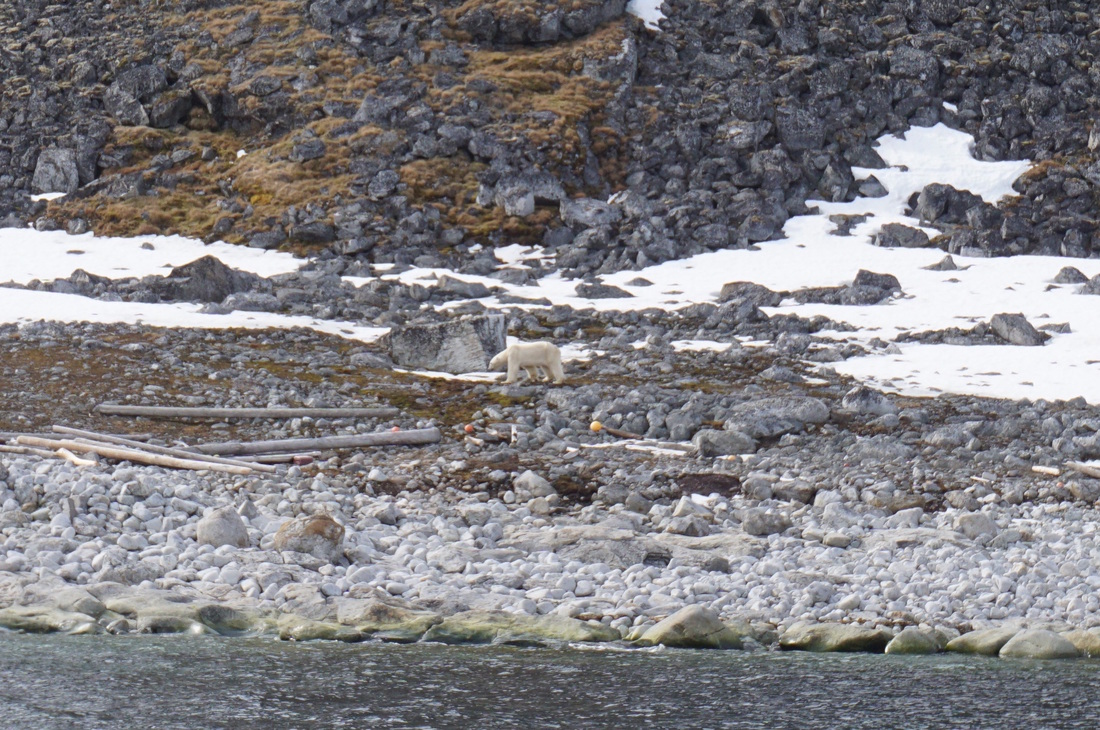
Polar bear walks among marine trash. Photo: Maya Weeks
Of course cleanups aren’t nearly as useful as preventing plastic pollution at the source. No matter how many cleanups we do, if plastics continue to be used once and thrown away, soon we won’t even be able to clean up our beaches.
“This is not an excuse for further damage.”
-Anna Lowenhaupt Tsing
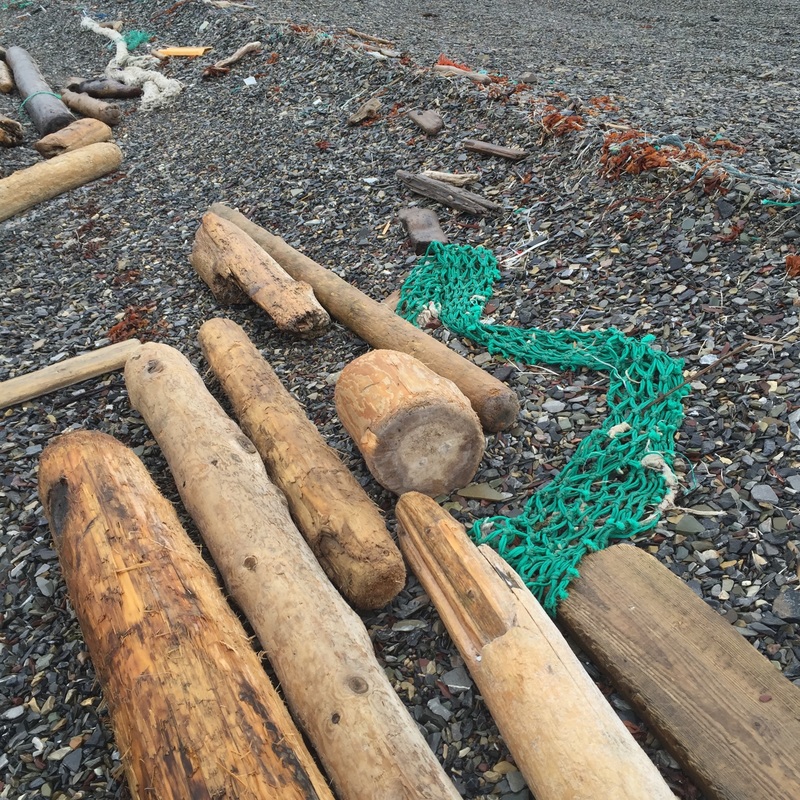
We found this ghost net and dragged it back to the ship. Photo: Maya Weeks
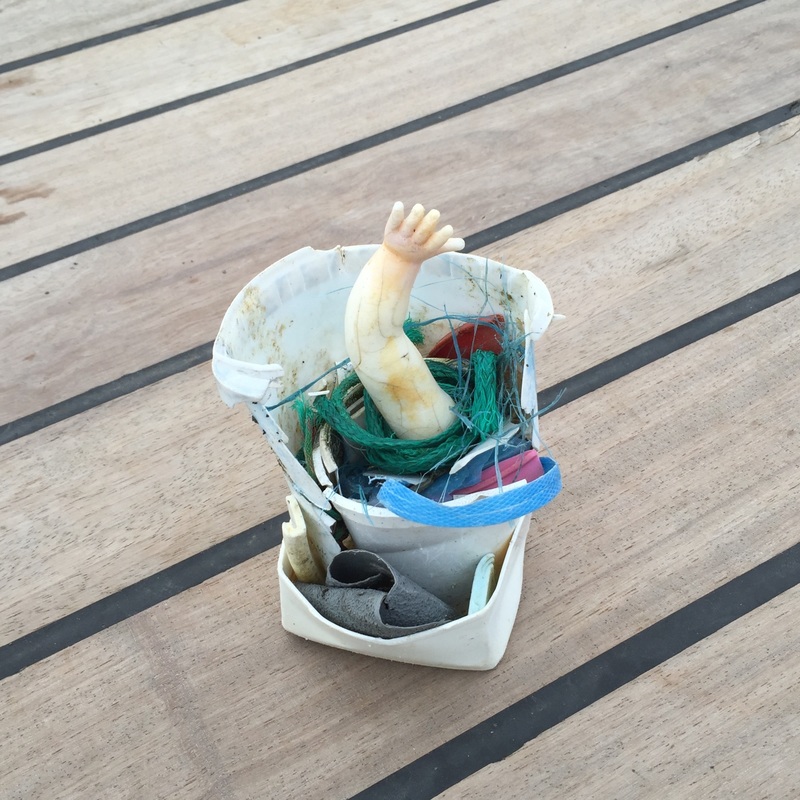
Sculpture I made from collected microplastics and marine trash. Photo: Maya Weeks
Infuriating as the cleanup work was, it was also infused with love: love of the ocean, love of being on the planet. And it was fun, too, to work alongside friends, to work with shared purpose, to drag a ghost net to back to our ship and know that no reindeer would have to get stuck in it. And it was fun to make sculptures like this one with a doll’s hand found by a friend, and to envision biodegradable forms of packaging which are now very close to reality, and to trim the sails and work with the wind and lie down on the wooden deck under the midnight sun.











